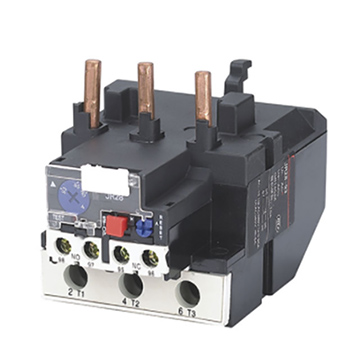What are the Types of Relay?
A relay is an electrical control device. When the change of the input quantity (excitation quantity) reaches the specified requirements, the relay makes a predetermined step change of the controlled quantity in the electrical output circuit. It has an interactive relationship between the control system (also known as the input loop) and the controlled system (also known as the output loop). Usually used in automatic control circuits, it is actually an "automatic switch" that uses a small current to control the operation of a large current. Therefore, it plays the role of automatic adjustment, safety protection, and conversion circuit in the circuit. Various types of relays are widely used in industry. Therefore, today we will introduce the structure, function and classification of relays. We hope that after reading this article, you can have a general idea of relays.
Structure
Relays generally have induction mechanisms (input parts) that can reflect certain input variables (such as current, voltage, power, impedance, frequency, temperature, pressure, speed, light, etc.). The relay also has an actuator (output part) that can realize "on" and "off" control of the controlled circuit. Between the input part and the output part of the relay, there is also an intermediate mechanism (driving part) that couples and isolates the input quantity, processes the function and drives the output part.
Functions
As a control element, to sum up, the relay has the following functions:
Expand the control range: When the control signal of the multi-contact relay reaches a certain value, it can switch, break, and connect multiple circuits at the same time according to the different forms of the contact group.
Amplification: Sensitive relays, intermediate relays and other equipment can control high-power circuits with a very small amount of control.
Integrated signal: When multiple control signals are input to the multi-winding relay in a prescribed form, they will be compared and integrated to achieve the predetermined control effect.
Automatic, remote control and monitoring: The relays on the automatic device, together with other electrical appliances, can form a program control circuit to realize automatic operation.
Application
Relay is an automatic switching element with isolation function. It is widely used in remote control, telemetry, communication, automatic control, mechatronics and power electronic equipment. It is one of the most important control elements.
Classification
According to the working principle or structural characteristics of relays:
Electromagnetic relay: An electrical relay that works by using the suction effect of the current in the input circuit between the electromagnet core and the armature.
Solid state relay: Refer to the solid state relay in which electronic components perform their functions without mechanical moving components, and the input and output are isolated.
Temperature relay: A relay acts when the outside temperature reaches a given value.
Reed relay: A relay is sealed in the tube and has the dual function of the electric shock reed and the armature magnetic circuit to open, close or switch the circuit.
Time relay: When the input signal is added or removed, the output part needs to be delayed or limited to a specified time before closing or disconnecting its controlled circuit relay.
High frequency relays: Relays have minimum loss for switching high frequency, radio frequency lines.
Polarized relay: A relay has the combined action of the polarized magnetic field and the magnetic field is generated by the control current through the control coil. The direction of action of the relay depends on the direction of the current flowing in the control coil.
Other types of relays: Such as acoustic relays, thermal relays, instrumentation relays, differential relays, etc.
Classification according to the external dimensions of the relay:
Miniature relays: Relays have the longest side dimension not greater than 10 mm.
Ultra-small miniature relays: Relays have the longest side dimension is greater than 10 mm, but not greater than 25 mm.
Small miniature relays: Relays have the longest side dimension is greater than 25 mm, but not greater than 50 mm.
According to the load of the relay is divided into:
Micro-power relay: When the open-circuit voltage of the contact is DC 28V, the resistive relay is 0.1A and 0.2A.
Weak power relay: When the contact open circuit voltage is DC 28V, the resistance is 0.5A, 1A relay.
Medium power relay: When the open-circuit voltage of the contact is DC 28V, the resistive relay is 2A and 5A.
High-power relay: When the open-circuit voltage of the contact is DC 28V, the resistive relay is 10A, 15A, 20A, etc.
According to the protection characteristics of relays:
Sealed relay: The contact and coil are sealed in the cover by welding or other methods, isolated from the surrounding medium, and the relay with a low leakage rate.
Enclosed relay: A relay is sealed (unsealed) with a cover to protect the contacts and coils.
Open relays: Relays do not use protective covers to protect electric shocks and coils.

